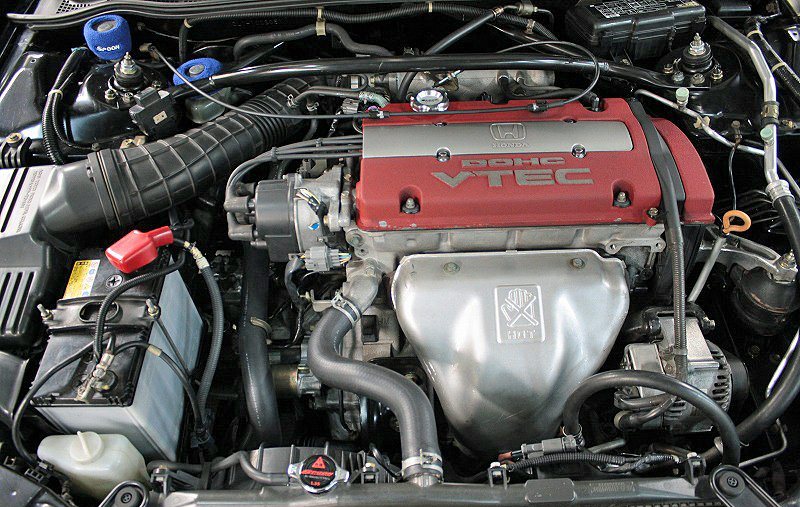VTEC and VVT-i systems were developed by Honda and Toyota respectively in order to improve the efficiency of car engines. VTEC (Variable Valve Timing and Lift Electronic Control) is a valvetrain system developed by Honda that allows engines to achieve turbo level specific output without the bad fuel efficiency that turbocharging normally introduces. VVT-i (Variable Valve Timing with intelligence) is a similar system developed by Toyota and has several variants among which VVTL-i (Variable Valve Timing and Lift intelligent system) is analogous to VTEC. VVTL-i was first used in 1999 Toyota Celica SS-II but has been discontinued because it does not meet Euro IV specs for emissions.
Comparison chart
| VTEC | VVT-i | |
| Launched | 1983 | 1996 |
| Working principle | It is a valve train system to improve the volumetric efficiency of a four-stroke internal combustion engine. It not only varies the timing but also lift the valves. | It varies the timing of the intake valves by adjusting the relationship between the camshaft drive (belt, scissor-gear or chain) and intake camshaft. Does not lift the valves. |
| Developed by | Honda | Toyota |
| Stands for | intelligent-VTEC (Variable Valve Timing and Lift Electronic Control) | Variable Valve Timing with intelligence |
| Intake camshaft | The intake camshaft is capable of advancing between 25 and 50 degrees when the engine is running. | The timing of the intake valves varies by adjusting the relationship between the camshaft drive (belt, scissor-gear or chain) and intake camshaft |
| phase changings | Phase changes are implemented by a computer controlled, oil driven adjustable cam gear | • Engine oil pressure is applied to an actuator to adjust the camshaft position |
| Perfomance | Phasing is determined by a combination of engine load and rpm, ranging from fully retarded at idle to somewhat advanced at full throttle and low RPM | Adjustments in the overlap time between the exhaust valve closing and intake valve opening results in improved engine efficiency. |
Working Principle
In an automobile engine the intake and exhaust valves move on a camshaft. The timing, lift and duration of the valve are determined by the shape of the lobes that make the shaft move. Timing refers to an angle measurement of when a valve is opened or closed with respect to the piston position and lift refers to how much the valve is opened.




